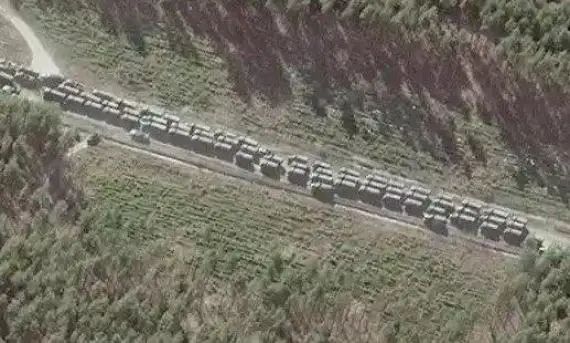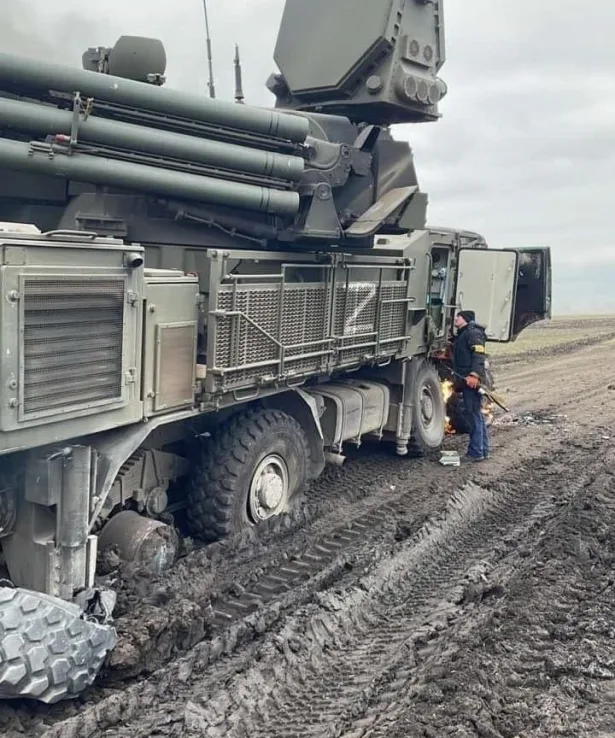When the Russian army rolled into Ukraine in mid-February, the outcome seemed inevitable. Expert opinion predicted that resistance would be crushed within days. After all, the Ukrainians were facing the world’s 5th largest armed forces, a mighty war machine of terrifying size and strength.
And then, something really unexpected happened. The invaders got stuck. The world watched in amazement as a 40-mile convoy of military hardware was bogged down for three long days. Nor was that the only problem: trucks and other vehicles were grinding to a halt left, right and centre.
There isn’t one simple explanation behind this spectacular failure. Russian tactics, the notorious Rasputitsa (the seasonal change where the ground thaws into impassable mud), and of course the ferocious Ukrainian resistance all played their part.
But there’s also the role of the humble tyre.
Eagle-Eyed Tyre Expert Weighs In
There’s been an unprecedented amount of coverage of the Ukraine invasion on social media, allowing expert commentators from all over the globe to offer their opinions.
Enter academic and tyre enthusiast Karl T. Muth. Poring over pictures of stalled Russian military vehicles, he tweeted:
Unike Karl, we haven’t encountered terrible tyres in Somalia or the Sudan, but we’ve seen plenty in our own backyard of Oxfordshire, Berkshire and Bucks, and the end result is the same.
(Just to be clear, we’re not saying budget tyres are low quality — there are many great budget tyres available — and higher standards in the British and EU market help to protect us from the worst knock-off brands).
It’s also possible that the Russians’ tyre problems may have been compounded by another factor: poor tyre maintenance.
Motorhomes, Towing Caravans & the Russian War Machine
Why do we see so many motorhomes and towing caravans with flat tyres? This is how we explain it on our Caravan and Motorhome page:
Caravans rarely cover the mileage needed to wear tread down to legal limits, but it would be wrong to assume that a caravan tyre with plenty of tread must be in good condition.
One reason for this is that tyres deteriorate with or without road use. As good as modern tyres are, exposure to heat, light and the atmosphere will gradually perish the rubber. Perished rubber has reduced elasticity and is prone to splitting.
An additional problem is that caravans are typically left standing for a much longer period of time than most vehicles. When the tyre continually bears the weight of the caravan on the same section, flat spots can develop. These flat spots are more problematic than when they occur in cars, in which the distortion disappears as the tyres heat up.
The upshot of this is that caravan tyres should be regularly checked for signs of cracking in the side walls or tread. You should also consider following the Caravan Club recommendation of changing tyres after five years. Their research indicates that the deterioration and failure rate increases considerably after this time.
Could it be that the same problem of leaving vehicles standing caused problems with Russian military vehicles?
At least one defence expert thinks so. According to The Telegraph,
Trent Teletenko, a former US Department of defence civil servant who had responsibility for helping audit army vehicles, suggested the Russians were neglecting to maintain their vehicles properly.
Mr Teletenko saw social media footage of Ukrainian forces towing away a Russian Pantisir missile system which was abandoned after being bogged down in a muddy field. It lost several tyres as it was pulled out of the mud, which he said suggested maintenance problems.
Mr Teletenko said it was vital that military trucks were turned over every month to allow the central tire air inflation system to be “exercised” and checked for leaks or infestations. They also have to be moved monthly because direct sunlight ages truck tyres, he said.
He went on to suggest that leaving military truck tyres in one place causes the side walls to rot and become brittle.
Using low tyre pressure, he said, then results in catastrophic failure.
Well, we could have told him that. Strange to think that the same process that leaves UK holidaymakers stranded may have helped cripple such a colossal invading force.
Please note: in this post, we’re not making light of the desperate situation in Ukraine. Far from it. But as a tyre-related blog, all we can do is talk about how this truly global event relates to our own area of interest.
The BK Tyres blog covers a wide range of topics related to tyres and driving.
For mobile tyre repairs and replacement tyres at competitive prices, contact BK Tyres. We can fit tyres at your place of work or at your home in South Oxfordshire.



